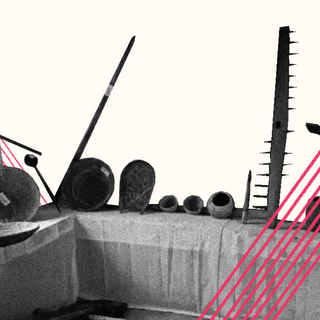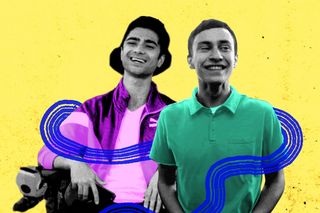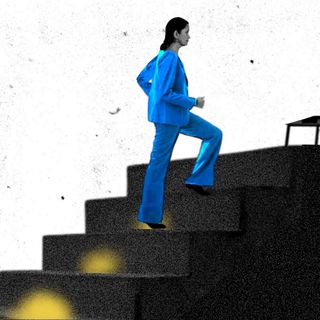
How Communities Offer Joy, Belongingness to Disabled People – In Both Reel and Real Life
The difference between the ways disabled and non-disabled people experience the world, can create a vast empathy gap between them.

Netflix’s Mismatched features a disabled character Anmol Malhotra — played by actor Taaruk Raina — who has been using a wheelchair since he met with an accident while driving his car drunk and high. The portrayal of the character is largely flush with ableism: an able-bodied actor is, yet again, playing a disabled one; the disability itself is represented as a form of punishment for Malhotra’s deviant behavior in the past; and, like most on-screen characterizations of disability, Malhotra was, at least midway into the second season, depicted in an aggressively unfavorable light. However, there was one thing that the show did get right about the experience of living as a disabled person: the joy, liberation, and belongingness that disability communities can offer.
The spirit of community is central to the human experience — affording a sense of belonging and serving as a significant source of social connection, both crucial elements of a fulfilling life. Disabled people, however, can often feel alienated from most non-disabled communities.
Despite people’s lived experiences of disability varying wildly, disability communities offer them space to express their discontent, insecurities, frustration, pain, and anger without turning it into a “pity fest” and making them feel “lesser than,” or patronizing them with suggestions on how to overcome their disability. As such, their participation in disability communities can help them feel more accepted, less lonely.
Perhaps, the most apparent illustrations of how non-disabled communities exclude disabled populations are the celebrations most people participate in during the ongoing festive season. Describing a Navratri celebration, Neurabi wrote, “[O]ne day there was a huge and tiring submission where I had to stay up the whole night to complete it because [my team members] were busy dancing… I can not do the same thing, I don’t even have an alternative to what they are doing. And, hence, the festival times are particularly difficult for me.”
Festivals, indeed, can be alienating for disabled individuals — most festival venues are not only inaccessible to people with motor impairments, but the poor crowd management further endangers their safety should they somehow manage to gain access; the makeshift toilets on site are often unsafe and unhygienic even for able-bodied individuals; seating is often inadequate; and, of course, most venues lack designated areas that would allow people with sensory impairments to participate in the festival safely. But since disabled people don’t exist in a vacuum and are very much a part of society, their loneliness is often compounded by the prospect of not being able to take part in events everyone around them is preparing for in full swing.
When I explained to a colleague how I’ve been forced to create my own festival traditions after feeling isolated during Durga Puja — the grandest festival of my community — for years, she empathized saying, “Pandals in any cultural memory are always illustrated with such bustle and clamor.” Just like festivals, almost every “fun” experience endorsed by pop culture — from clubbing to heritage walks to amusement parts to concerts — often ends up excluding people with different disabilities. “What looked like an accessible place to me when I was able-bodied now vibrantly stands out as inaccessible,” writes Heather Jones, who developed a degenerative back condition in her late 30s.
Related on The Swaddle:
Why Disability Activists Argue Against Labels Like ‘Differently Abled’
Yet, many disabled people are forced just to grin and bear it — fearing that choosing to complain, instead, would spur their able-bodied friends and family to treat them as yet another “Debbie Downer,” or make them feel like they’re being a nuisance to everyone else, prompting greater ostracization than they already face.
The alternative is to assiduously advocate for their needs, which, of course, can get very exhausting very quickly. Eventually, the vast difference between the ways disabled and non-disabled people experience the world — not due to the way their bodies function, but due to society’s ingrained, institutionalized ableism — can create a chasm so deep between them that bridging it becomes almost impossible. That’s where disability communities come in.
In 2012, Damian Milton, a British social psychologist specializing in autism research, came up with the theory of the “double empathy problem” to explain why autistic people are often misunderstood. According to Milton’s theory, “having similar ways of understanding the world helps people understand each other and connect.” As an article in the journal Frontiers for Young Minds explains, “[E]mpathy is a two-way process that depends a lot on our ways of doing things and our expectations from previous social experiences, which can be very different for autistic and non-autistic people. These differences can lead to a breakdown in communication that can be distressing for both autistic and non-autistic people… mak[ing] it more difficult for them to connect, share experiences, and empathize with one another.”
The communication — and, by extension, the bond — between disabled and non-disabled people, too, can meet the same fate. “Able-bodied people never have to worry about being unable to get inside a building or to a specific room or location inside a building… Neurotypical people never have to worry about whether their attendance at an event will result in severe detrimental consequences on their sensory systems, emotions, or mental health… When able-bodied people or neurotypical people do not live completely independently, they are rarely if ever assumed to be lazy, incompetent, inferior, less-than, deficient, or defective,” argues Lydia X.Z. Brown, an autistic disability rights activist.
Instead of treating one another as burdens, disabled communities often offer support to each other — promoting interdependence over toxic ideals of independence. “[N]on-disabled people view the entirety of the disabled experience through the lens of dependence,” writes Srinidhi Raghavan, who lives with fibromyalgia. Painting a gratifying picture of interdependence within the disability community, Raghavan continues, “I was once walking next to my dear friend and colleague… towards the breakfast hall when I felt myself go weak in the knees. We stopped and I began to lean on her to hold me up. Through a process of mutual assistance, we walked forward. Me leaning on her for support; she turning to me for direction… What the world sees as lack, the community see as opportunity.”
Related on The Swaddle:
Why We Expect People With Invisible Disabilities To Learn To Act ‘Normal’
Moreover, rather than regarding one another’s achievements as “inspiration porn” by objectifying their struggles and perpetuating harmful standards, disability communities validate, encourage, and most importantly, promote self-care — sometimes, through the simple acts of resting and resisting. “I relied on them for physical and emotional support… They hold me when I cry and they celebrate with me when I achieve success. This community is my safe place that won’t look at me any differently and still has incredibly high expectations of me,” noted Jess Long, a disabled individual from the U.K.
In Mismatched, we see Malhotra’s character undergo a massive change in temperament upon his participation in a support group for disabled individuals, which allows him to expand his circle of friends to include people who can relate to his everyday struggles navigating a world that doesn’t even have enough clean, accessible restrooms for him to relieve himself. His interaction with the support group allows him to feel like he belongs — perhaps, for the first time ever since he had to confront his disability. In doing so, the support group catalyzes his journey of self-acceptance in a way that multiple rounds of one-on-one therapy, too, couldn’t.
Mismatched highlighted the power of support groups in alleviating disabled peoples’ mental health struggles. Atypical — yet another show on Netflix — showcases the impact of support groups in helping its protagonist Sam, an autistic character played by Keir Gilchrist, plan his college career.
Neither of the shows is perfect. Nonetheless, credit where it’s due: they did still manage to hit the nail on the head — or, at least, came close to it — in their respective narratives of the potential of disability communities to make a positive impact on the lives of disabled people.
It is through the practice of interdependence that disability activists often preach the message of community. “Interdependence moves us… towards relationships where we are all valued and have things to offer,” Mia Mingus, a disability justice activist, had stated. “[It] is both ‘you’ and ‘I’ and ‘we’. It is solidarity, in the best sense of the word. It is inscribing community on our skin over and over and over again.”
Devrupa Rakshit is an Associate Editor at The Swaddle. She is a lawyer by education, a poet by accident, a painter by shaukh, and autistic by birth. You can find her on Instagram @devruparakshit.
Related


How Stereotypes Affect Middle‑Aged Women’s Careers
